Whether you want to go birdwatching or stargazing, it’s crucial to understand the different types of binoculars and which one is ideal for your needs.
There are two main types of binoculars, and what differentiates them is the prisms: roof prism and Porro prism.
This article compares roof prism vs Porro prism by breaking down how they work and what activities they are best suited for, so you can make an informed buying decision.
What is the Purpose of Prisms in Binoculars?
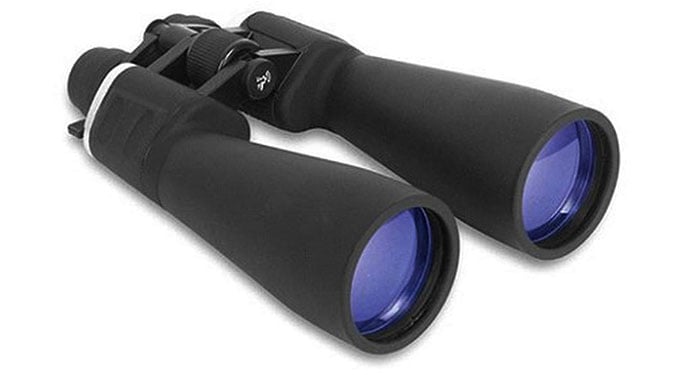
Before we compare Porro prism vs roof prism, we need to start from square one by understanding how prisms in binoculars work.
When you think of a prism, the first thing that comes to mind might be that pretty crystal pyramid that makes rainbows on your bedroom walls, but this is not what binoculars are about.
Binoculars utilize a prism for optics. It is a transparent object that can be made of glass in a triangular shape. It separates light into a spectrum of colors through refraction.
These prisms then reflect the white light using the objective lens, making the object in view appear larger and brighter.
The prisms also invert the image, so you don’t end up viewing the object upside down.
Difference Between Porro Prism vs Roof Prism
As we mentioned before, there are two types of prisms: roof and Porro. Each design offers a different user experience and also varies in price and performance.
But which is better: roof or Porro prism binoculars? Both shine (and are complicated) in their special ways. Let’s break it down.
Porro Prism
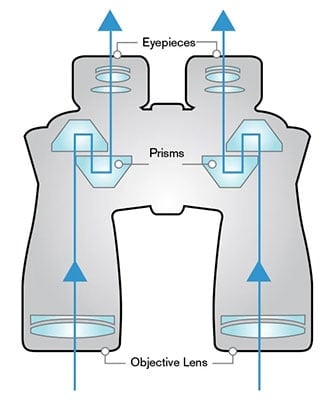
Porro prism binoculars were invented by an Italian optician named Ignazio Porro in 1854, and the design is still popular today.
It’s a simple design that renders high-quality results. After the objective lens gathers light, the light is sent through a pair of prisms horizontally.
The movement between the prisms is rapid, amplifying and inverting the object in view to create the magnified image you see in the ocular lenses.
You can tell Porro binoculars apart from roof binoculars because it has an offset design that looks like a zigzag.
Porro style is typically heavier to handle and more fragile than roof models.
But, if you don’t mind the extra care, you get to enjoy an incredibly clear 3D image with a larger field of vision than other binoculars are able to produce.
And even though Porro binoculars tend to be cumbersome, the design is less complex, making them cheaper to manufacture and more affordable for those on a budget.
Porro binoculars are ideal for hunting, sporting events, the outdoors, and short-range birdwatching.
Pros:
- Clear 3D image
- Wider field of vision
- Simple design
- Costs less than other varieties
- Adjustable according to vision preferences
Cons:
- Heavy and awkward to handle
- Might need to purchase a tripod separately
- Fragile design
- Less waterproof
BAK4 vs BAK7
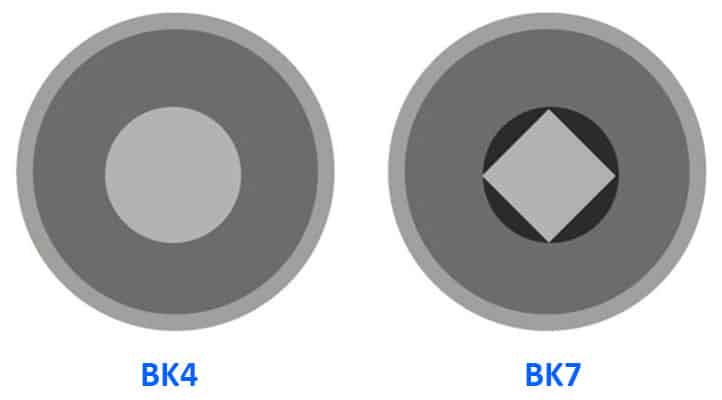
If you’ve been browsing through binoculars, you might have noticed BAK4 and BAK7 prism systems on display. But what are they?
Both types use specialized Porro prisms that enhance the viewing experience.
BAK4 is considered to be superior to BAK7 due to a truer round at the exit pupil that improves the transmission of light without too much light loss.
The BAK7 has a square exit pupil, which inhibits the amount of light that can be transmitted. This type is usually found in binoculars on the lower price spectrum.
Roof Prism
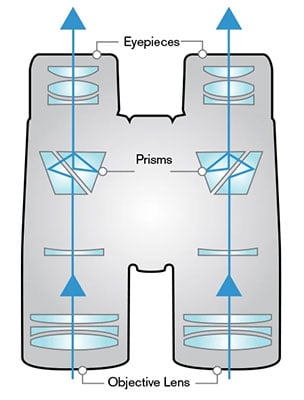
Next up, we look at the contemporary roof prism and how it stacks up against the traditional Porro prism.
Compact and lightweight, roof prism binoculars are much easier to tote around on adventures than the heavy Porro models but don’t be fooled because the roof prism design is quite complicated and complex.
Without the horizontal zigzag element, the movement of light is not amplified and inverted easily like with Porro prisms.
Instead, roof prism binoculars utilize an optical rangefinder and other special machine parts to change the light direction by 90 degrees, reflecting it from the objective lens to the ocular lens.
The end result of this intricate system is a higher magnification and brighter view through the ocular lens.
Bear in mind that this type of prism design is expensive to manufacture. That means you’ll probably pay more for roof prism binoculars than a Porro model.
Pros:
- Light, compact, portable
- Durable design
- Higher magnification and brighter image
- Waterproof
Cons:
- Expensive to design and manufacture
- Many models do not allow the user to adjust the barrel distance for improved vision
Which is Better, Roof Prism or Porro Prism?
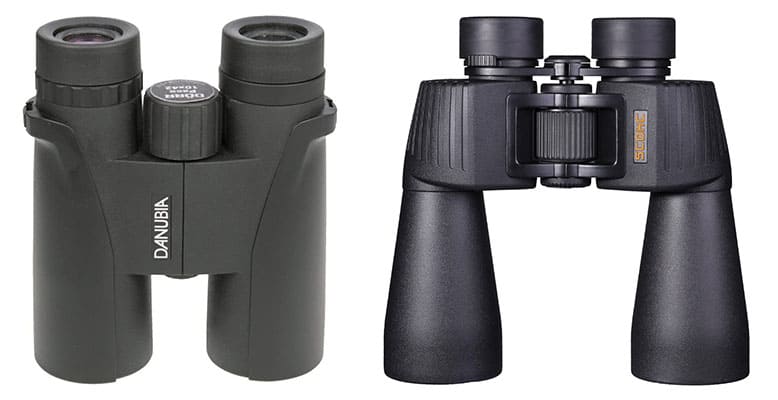
The truth is, one is not better than the other. These are both high-quality prism designs that give users an excellent viewing experience.
It really comes down to your personal goals, as there are many factors at play here. You need to ask yourself what you plan to do with your binoculars.
Will you be sitting on your deck looking up at the stars or hiking through dense woods? Are you on a tight budget or willing to pay for convenience?
Remember that roof prism binoculars are more expensive, but they are long-lasting and waterproof. Their durability and the fact that they are compact might make them a better choice for travelers.
On the other hand, if you’re on a tight budget, then Porro prism binoculars cost less than roof binoculars but provide excellent views.
They are also versatile. Just don’t be too rough with them!
To help you narrow down the playing field between Porro prism vs roof prism binoculars, we’ve created the table below to show you the types of activities each one is best suited for.
| Short Range Birdwatching | Stargazing | Daytime Hunting | Long-Range Spotting | Night Hunting | Canoeing/Kayaking |
| Porro | Porro | Both | Roof | Porro | Roof |
Final Thoughts: Roof Prism vs Porro Prism
When comparing roof prism vs Porro prism binoculars, both types offer advantages and disadvantages depending on what you want to use them for. But rest assured, you’ll get a quality view with either prism design.
Porro prisms are less complex, making it a better bargain if you’re on a budget. However, you get a heavier model that’s fragile and less waterproof. So it may not be ideal if you’re constantly on the move or on the water.
Roof prism binoculars are more complex and therefore expensive, but you’re paying for convenience here. It’s lightweight, compact, and durable for easy viewing without the hassle.
References & Resources:
- Porro Prism, Britannica.
- Binoculars and Telescopes for Ornithologists, Research Gate.
- Binocular Functions, Intechopen.
- Binoculars Buying Guide, How Stuff Works.
- Why Do the Best Roof-Prism Binoculars Need a Phase-Correction Coating? Sky and Telescope.